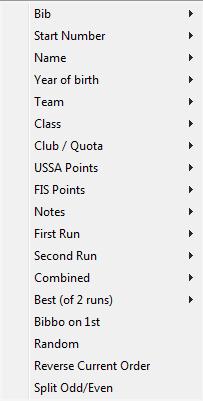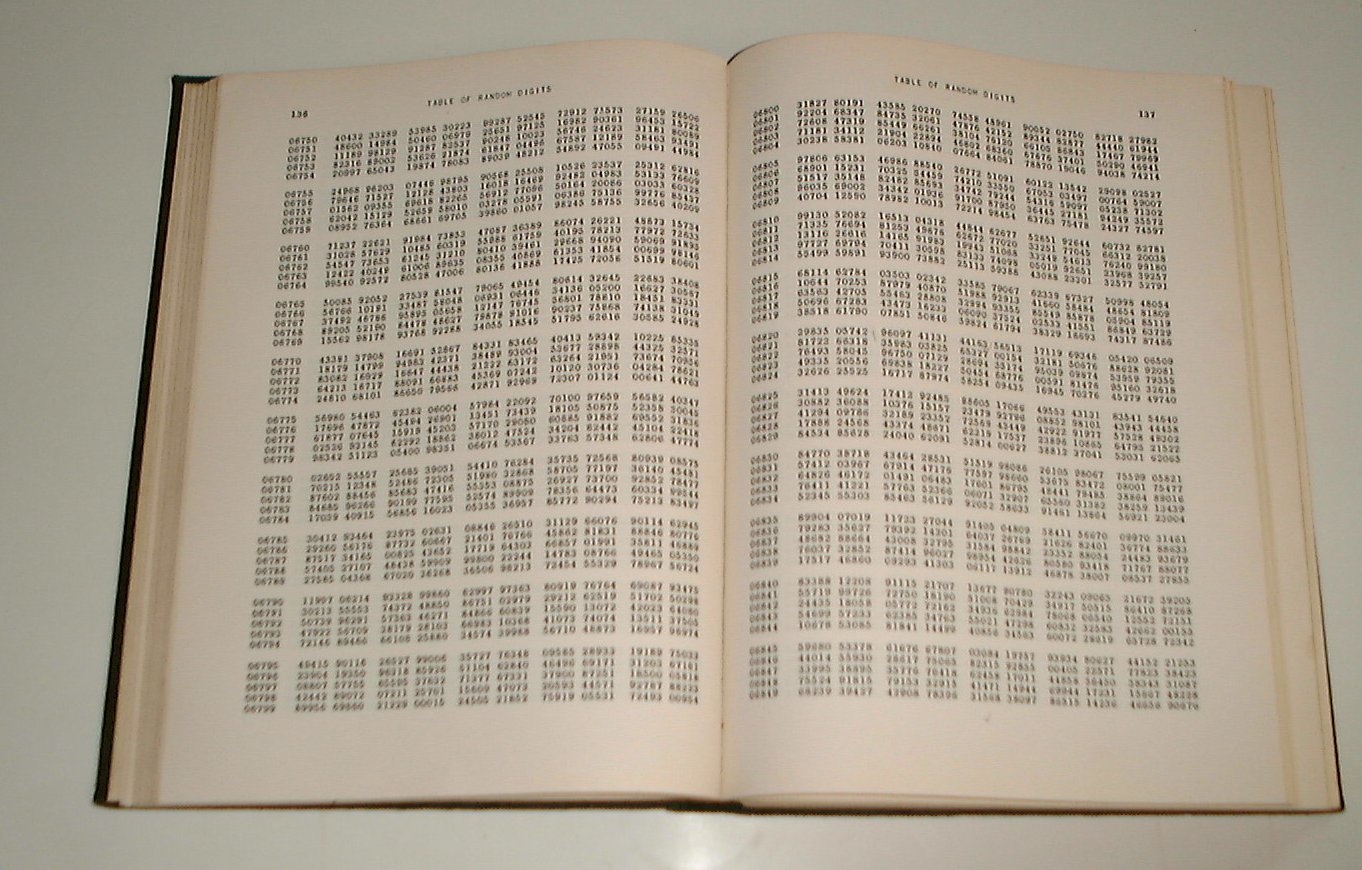National FIS Software : Competitors Sort
Overview
Clicking on Sort will give a list of possible sort options, often with sub-options for Ascending and Descending. The list will vary depending on the settings on the Header Tab.

Under most situations you won’t need to use the sort options. Whenever a report is generated it will sort the competitors into the correct order.
If the order it creates is not correct or you have a special situation that needs a particular order this can be achieved as follows:
- In the Edit|Options menu uncheck the ‘Automatically Sort when needed’ option. When this is unchecked it will give a prompt any time it would normally sort, giving you the option to accept the default sort or not.
- Using the sort options (with or without a block marked) and possibly the Move option get the competitors into the order needed.
- Print the report. When it prompts to ‘Sort ?’ answer ‘N’
- NOTE: In the event of more than one competitor having the same value for a sort option the original order is maintained. For example, if you sort by Time and then sort by Class you'll end up with the Competitors sorted by Time within Class. This can be very useful!
Random Sorting
Questions often come up regarding random sorting.
Only Random Sort Once!
Never sort until you like the result! If you were doing a double blind draw in a team captains meeting and the resulting start order happened to be the same as the original order on the board, or if all competitors from the same nation raced first, you wouldn't do the draw again because that's a legitimate result of random sorting.
It's so quick and simple to do a random sort using the software that it may become tempting to do it again if the result seems unusual or coincidental.
Resist! Only sort once and accept whatever you get!
Is it Truly Random?
Technically, no, it's 'pseudorandom'. But, the argument can easily be made that for this application pseudorandom is random enough.
Websters Dictionary defines pseudorandom as:
- being or involving entities (as numbers) that are selected by a definite computational process but that satisfy one or more standard tests for statistical randomness
For those interested here's the details on the Random Sorting process used by Split Second Software:
There's a Random Number Generator built into the development environment used for making the software. This creates values between 0.0 and 1.0, and is based on a random seed.
The process has 2^31-1 (2,147,483,647) equally likely resulting values.
The process of calling a random number will repeat itself, but there's three reasons why this isn't that big of a deal (in this application):
- 2,147,483,647 is a LOT! For the application of Ski Racing if a random draw was done for 30 competitors, and you had a race every day, it wouldn't start to repeat for about 200,000 years!
- You would never know when it started repeating except if you compared it with all previous data.
- When the software starts the seed is initialized based on the system clock (microseconds). So, every time the software starts you wouldn't know where in that sequence of 2,147,483,647 random numbers you would be!
The actual random sorting process is done by:
- Assigning one of the random numbers (between 0.0 and 1.0) to each competitor.
- Sorting the competitors based on the random numbers set.
Random Thoughts
Perhaps the act of writing a number on a ping pong ball creates a less random situation than a pseudorandom number?
True random numbers are supposedly rare (although, the number 6 might be one of them). If you want official random numbers you might consider buying this book which contains 1 million random numbers along with 25 pages explaining how they were produced. If you like reading phone books, this might be even more fun! (click to enlarge)
